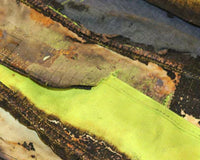In our last article we discussed what an arc flash really is and why you don’t want to be exposed to one, but we didn’t really talk about how to protect ourselves from one.
Arc Flash Personal Protective Equipment (PPE) is just about the only way to protect yourself once the arc flash has happened and if you are in the vicinity of it.
The main thing that distinguishes Arc Flash PPE from anything else is that it is “Arc Rated”. This means that it’s been tested to meet certain standards that prove it will absorb the incident energy of an arc flash.
The arc rating is simply a measurement of how much energy that piece of PPE will absorb, typically measured by an Arc Thermal Performance Value (ATPV).
“Arc thermal performance value (ATPV) — in arc testing, the incident energy on a material or a multi-layer system of materials that results in a 50% probability that sufficient heat transfer through the tested specimen is predicted to cause the onset of a second-degree skin burn injury based on the Stoll curve, cal/cm2.”
Who needs Arc Flash PPE?
Arc Flash PPE is a must for every electrician... but there are plenty of other roles/jobs that require the use of Arc Flash PPE.

Instrumentation workers, technicians, electrical engineers, linesman and millwrights might be obvious... but there is another group of workers who are usually left unprotected.
This group would be your maintenance, mechanical, operations and labourers... what?
Hear me out...
All too often this group if the workforce is tasked with working on-or-near-energized-electrical-conductorsor completing tasks which would be considered interacting with the equipment in a manner that could cause an electric arc.
So, when you are trying to determine who needs the PPE you really need to look at what is everybody doing.
When is Arc Flash PPE required?
1. When working on or near energised electrical conductors
2. When interacting with the equipment in a manner that could cause an electric arc
As I stated above, there are two key elements to a task which determine the likelihood of an arc flash occurring.
An example of working on-or-near energized electrical conductors would be during testing and troubleshooting of just about any piece of electrical equipment in the world.
Chances are you need to open a panel and chances are you need that equipment to be energized in order to effectively troubleshoot.
If you could accidentally contact energized electrical conductors (or circuit parts) with either your hand, tools, or test meter... then you could start an arc flash.
Another example... maybe this time of interacting with the equipment in a manner that could cause an electric arc... would be racking a circuit breaker on a live bus. This is a very common task and people feel the risk is low (probably because there are no exposed conductors), but nothing could be farther from the truth.
Most of this equipment is not designed to be racked in on a live bus and that is going to cause an arc.
Types of Arc Flash PPE
What are the different types of PPE required?
Well, if you think about it, you really want to protect your entire body, head-to-toe, from extreme heat energy and a fire ball.
So, let’s go through it.
Protecting your head.
You’ve got two options:
- Faceshield and balaclava; or
- Arc Flash Hood
 |
 |
 |
Both will do the trick, you just need to make sure that when you opt for the faceshield that you always wear the balaclava as well (otherwise you leave most of your head unprotected).
Protecting your body.
From a survival standpoint... this is by far the most important.
Options include:
1. Arc Flash Jackets
2. Arc Flash Overalls
3. Arc Flash Poloshirts
4. Arc Flash Shirts
5. Arc Flash Trousers
 |
 |
|
 |
If you can protect most of your body from getting a burn, then your chances of surviving and arc flash is greatly increased.
Arc rated shirt & trousers, overalls, jackets, parkas, rainwear, t-shirts and underwear all exist and should be considered a necessity in your workwear.
How to choose Arc Flash PPE
There are two key methods on deciding what arc flash PPE you need for the job.
- The incident energy method; and
- The arc flash category method.
Both have their flaws and we won’t go too deep on this today but basically it comes down to figuring out one thing.
How much heat energy am I likely to be exposed too?
Each method listed above (either by engineering calculation or expert opinions and estimations) will arrive at a value for ATPV required to do the job.
Make sure you are wearing a little bit more than what these methods recommend and your going to be alright.
In fact it’s been proven time and time again, that when a person is in an arc flash incident but they were wearing arc flash PPE (from head-to-toe) they will come out with hardly a scratch.
For the full article on How to choose Arc Flash PPE click here.





